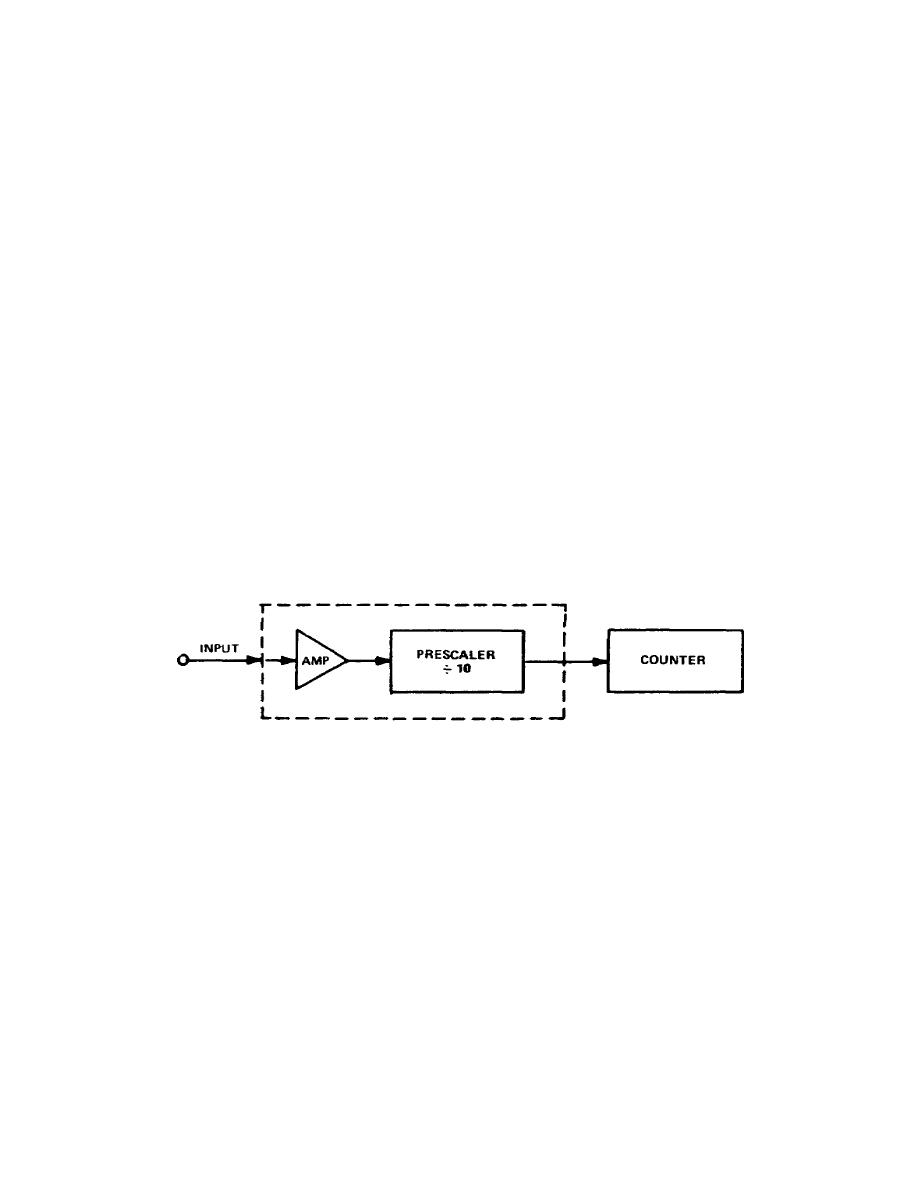
(1) A time interval counter that can measure extremely short time intervals
is available.
(2) A 1-MHz external frequency standard is multiplied to 100 MHz in order
to obtain 10-nanosecond time increments as the counted frequency, resulting in good
resolution.
3.
Precise
high-frequency
measurements
are
possible
because
of
several
innovations in quartz oscillator crystal design.
These have resulted in superior
electronic counter time bases. Ambient temperature affects the frequency by being
outside ranges of -20 degrees to +50 degrees C.
The accuracy of the counter is
limited by the time base oscillator stability because this oscillator circuit
furnishes the definitive time information for a measurement. The time base must be
calibrated periodically, because the drift rate causes a cumulative deviation in
frequency which can result in measurement error. The accuracy of precision quartz
oscillators is usually expressed as long-term stability.
Short-term stability
refers to changes in average frequency over a time sufficiently short so that the
change in frequency due to long-term effects is negligible.
4.
There are four methods of extending the digital frequency measuring
capability of electronic counters.
These methods are the prescaling method, the
heterodyne method, the harmonic generator, and the transfer oscillator method.
Each of the four methods is explained, and the basic principles of operation are
shown in block diagram.
a. In the prescaling method, (fig 3-9) the input signal is amplified and
scaled by a decade in order to divide the input frequency by a factor of 10. The
input to the counter from the prescaler is now within the direct measuring range of
the counter.
For example, if the prescaler is used in conjunction with a 10-MHz
electronic counter, then the direct measuring range of the counter is extended to
100 MHz.
Figure 3-9.
Electronic counter prescaling method, block diagram
b. The heterodyne method is a high frequency measuring method based on
subtracting known reference frequencies until the different frequency is within the
direct measuring range of the electronic counter.
61



 Previous Page
Previous Page
